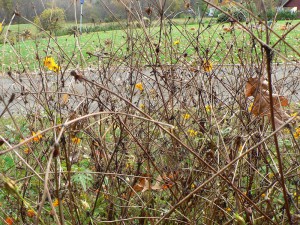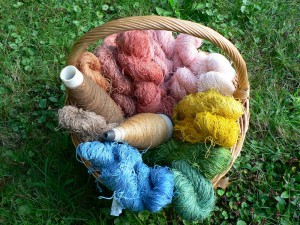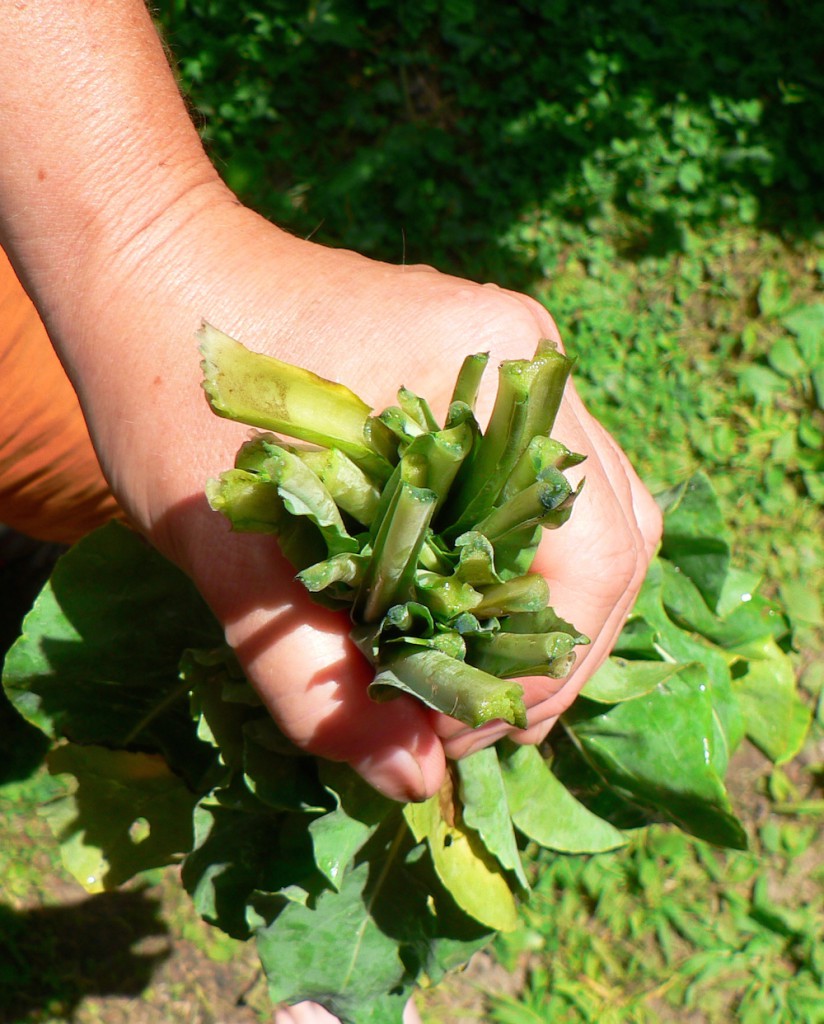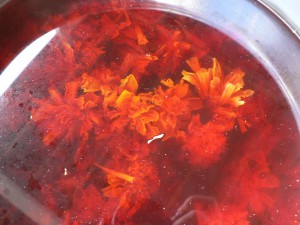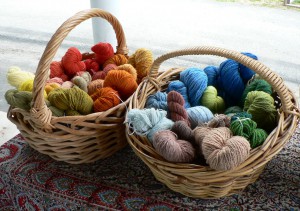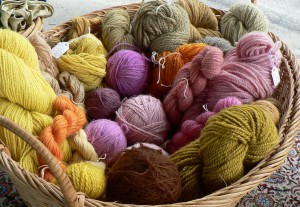About a month ago I was tidying up the crafts room. I was trying to get organized so I could weave a new crop of “Jack Frost” bookmarks before the winter holidays.
The crafts room is the room in our apartment which houses my loom, all my yarns, dried dye plants, dye equipment and materials, niddy noddy, swift, scales, carders, and drop spindles. It also contains two large book shelves full of books, a desk, a small filing cabinet, bookbinding supplies and tools, two antique scutching knives and an antique hetchel. The crafts room also contains a lot of dyed fleece and spinning fiber, hand-woven items, notebooks with all my dyeing, weaving, and teaching records, and some fiber magazines. Also, it’s where I store plastic bins with samples and materials for various fiber arts activities that I teach, and an ironing board and iron. And lots of other stuff like dye plant seeds and the beater and reeds for a 40 inch Macomber loom that’s been occupying my mom’s laundry room for a year while I try to figure out what to do with it. I know, that is a nutty list, and I didn’t even list everything. It is in a fairly chronic state of chaos. Continue reading “Three Bags Full”

